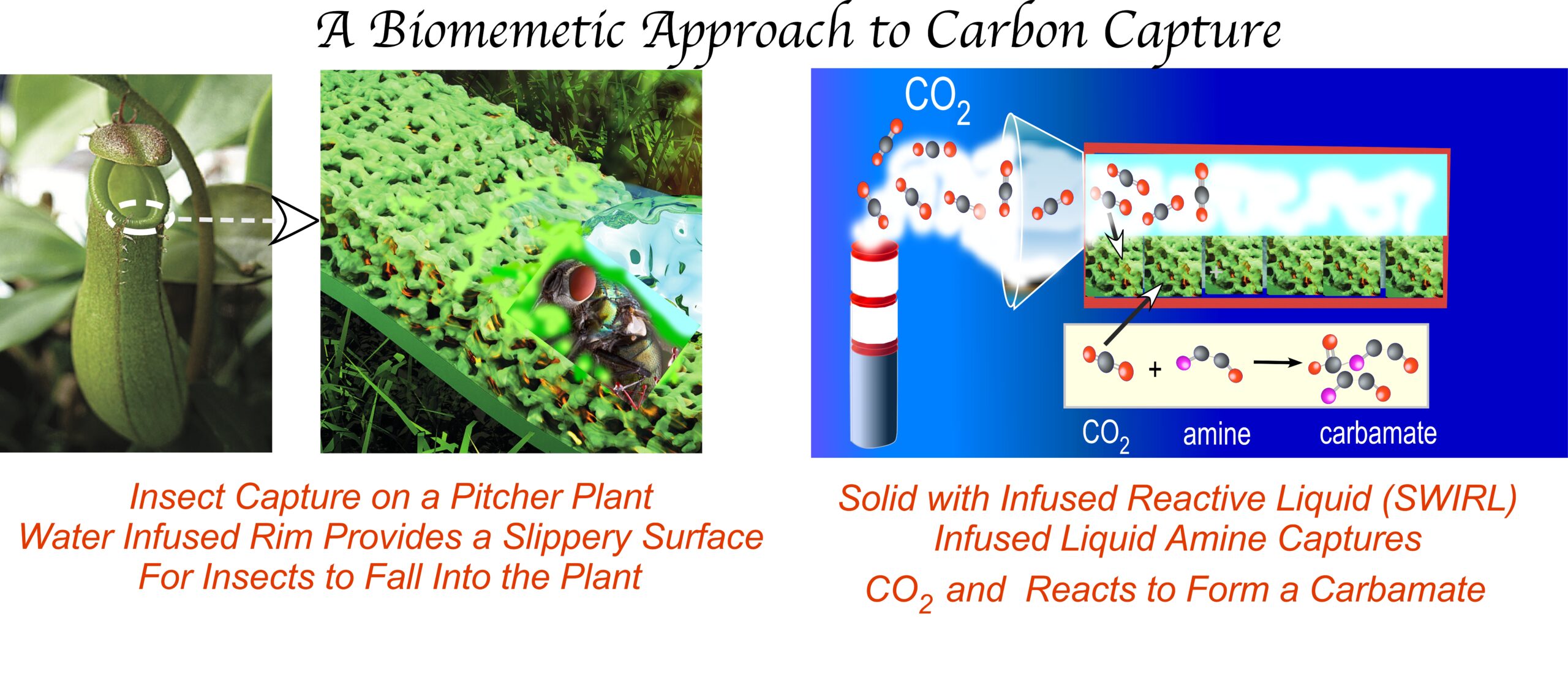Carbon dioxide gas emissions have a significant impact on climate change, and according to an annual report from the U.S. Energy Information Administration, more than 40% of the total anthropogenic CO2 is emitted by fossil fuel power plants.
Chemical engineering professor Charles Maldarelli and Ph.D. student at the Grove School of Engineering Pedro Bertolini are working in collaboration with Mohsen S. Yeganeh, Andrew R. Konicek, and Arben Jusufi from ExxonMobil to counteract the effects of greenhouse gasses and their accumulation in the environment through novel technology. Maldarelli, Bertolini, and ExxonMobil focus specifically on the removal of CO2 emissions from power plants.
One component of the project is to design a new device to remove the content coming out of the flue gasses of a power plant. The second is to look at direct air capture, in which CO2 is removed from the atmosphere to reduce its overall level in the environment. Maldarelli and Bertolini are primarily focused on the engineering analysis and mathematical modeling of the project so that ExxonMobil can build the technology. The team comes together to compare experiment results and make model predictions to refine and optimize the technology.
Bertolini said that the modeling provides insight into the technology that couldn’t simply be explained through experiments alone.
“If we can explain the technology, then we know how we can manipulate it to make it more efficient.”
While various technologies to capture CO2 already exist, ExxonMobil’s initiative seems promising as it possesses similar capture efficiencies to some commonly used methods and could be scaled up to make an impact on climate change. “I think it’s a combination of technologies that will provide a satisfactory solution to this problem we’re at,” Maldarelli said.
The technology, named SWIRL for Solid with Infused Reactive Liquid, originated from pitcher plants, which capture insects in their pitcher-like leaves and release acid to dissolve their prey.

The inside of these plants is coated with a thin liquid film held to the surface by capillary forces, which gave the team the idea to modify a solid surface with a reactive liquid. By pouring a reactive liquid onto the surface of a solid, ExxonMobil hopes to flow CO2 over the liquid film and capture it through the reaction occurring from the gas passing over the film and reacting with the liquid.
The project is in its early stages, but the team said it’s hopeful that the collaboration will continue to bring new advances to the reduction of greenhouse gasses. “The premise of how this idea came to be from this leaf to now using it for carbon capture, I think, is a very interesting and unique project,” Bertolini said.
The support from ExxonMobil in funding the research and providing a stipend to the Ph.D. student allows for the excellence in research Maldarelli has overseen over the years, he said.
“This project has been the most satisfying because of its ambition as a green technology,” he said.
Maldarelli’s partnership with ExxonMobil began nearly 10 years ago, but he also has collaborated with companies such as Bristol Myers Squibb, DuPont, and S.C. Johnson on mathematical models of their process. After having worked on projects involving the removal of water from crude oil by electrocoalescence, the removal of particles from crude oil, and the design of a catalyst, he said that industrial collaborations help academics think and work outside of the box.
“I find the exposure to the industry is very satisfying, not just for Pedro’s sake, but for my sake as well because it opens up academics to real-world questions and trying to solve real-world things.”
Lylia Saurel is a writer for the RICC and recent graduate from Baruch College, where she was awarded Institutional Investor in Journalism. She holds an AA in Writing and Literature and a BA in Journalism and Intercultural communications. She is a former reporter for Dollars & Sense and copy editor for The Ticker. Her work has appeared in The Ticker, D&S Magazine, Daily Planet online edition and others. In addition to written journalism, she enjoys photojournalism and the visual arts.